Tags
"environment"
Metro Hazardous Waste: Nate Martin, Winter Shadow 2016

Metro is a large municipal agency based in the Portland area, though its influence is defined by a boundary that encompasses multiple cities in several counties. This January, I had the opportunity to spend two information-filled days meeting with and shadowing multiple Reedies who work at Metro.
The first day began at the regional center in Portland where I met my host, Jim. From there we got into a Metro-owned car and drove down to Swan Island to visit the MetroPaint facility. Metro runs a fantastic program there; there's nothing else like it in the country. Jim gave me a thorough tour of the facility, the most exciting part being the processing room. This is a sealed-off room where a small crew (four or five people in jumpsuits and rubber boots) receives and sorts containers of paint that have been collected from throughout the Metro region. The crew quickly opens the containers and inspects them for quality. If they're bad they get dumped into a drain leading to a large plastic tank. If they're good, they get mixed and dumped into one of about a dozen different stations, sorted by approximate color, that drain down to separate collection tanks. It's a messy assembly-line process, and fascinating to watch. The collected paint is further homogenized and adjusted to create standard colors that Metro sells commercially. All of this work, including the packaging, happens in the same facility. I had no idea of the extent or precision of this program before I visited Metro, and I was very impressed by the program’s ability to turn waste back into product.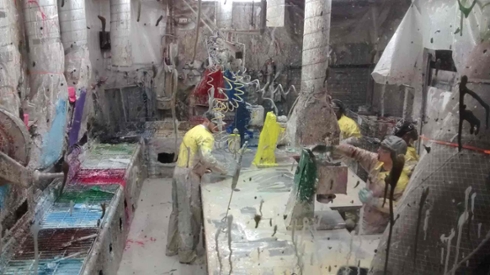
We left the MetroPaint facility after lunch and drove across the river to visit one of the two Household Hazardous Waste (HHW) collection centers that Metro operates (and that Jim manages). The operation there is efficient and impressive. Customers drive up with a load of waste that can include batteries, CFL bulbs, paint, pesticides, containers of mystery liquids, all kinds of things. A crew there does all the unloading while the driver stays in the vehicle. They quickly load everything onto small roll carts, triaging and sorting as they go. When the driver leaves they pay five bucks for dropping off up to thirty-five pounds of waste.
Continue reading Metro Hazardous Waste: Nate Martin, Winter Shadow 2016
Electric Power Research Institute: Kate Jentoft-Herr, Winter Shadow 2016
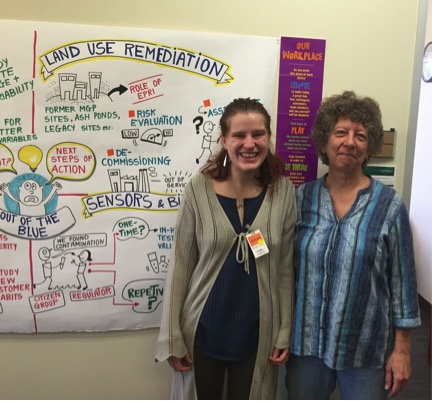
This January I spent a little less than a week shadowing Naomi Goodman at the Electric Power Research Institute in Palo Alto California. I was drawn to this shadow because I wanted a better sense of the kinds of career opportunities that exist for environmental chemists outside of academia. I was also interested in the fact that EPRI receives some of its funding for research from the power industry. I came into this shadow with the hope of understanding if this source of funding could potentially lead to a bias in the types of research that EPRI does.
After spending a week talking to Naomi and her colleagues I now have a much better appreciation for the work that EPRI does. EPRI does research for and receives funding from, a variety of different stakeholders, including their members in the power industry, but also the EPA and some environmental advocacy groups as well. EPRI’s goal is to gather and present data in the most objective, least biased way possible. They do not make policy recommendations or do advocacy work but strive to maintain a reputation of credibility and objectivity that makes them important allies to all third parties that require credible scientific analysis of environmental problems.
Naomi and the rest of the folks at EPRI were incredibly welcoming and hospitable. While I was there I got to have my own cubicle office and I spent most days working on my thesis, going with Naomi to meetings, and meeting with her collogues at EPRI and discussing their work. The people who I met with were, for the most part, project managers and no longer do their own research. They spend most of their time coordinating research projects, analyzing that research, and communicating the findings of that research to the agencies, companies, and other interested parties that are their members. This happens largely via phone calls.
Capturing Climate Change in Madagascar: Kate Hilts, Winter Fellowship for International Travel
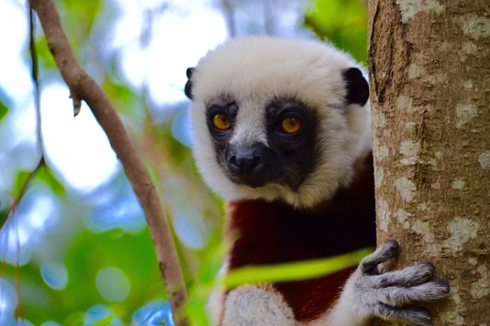
Kate Hilts, senior Environmental Studies-Political Science major and recipient of the Winter Fellowship for International Travel, shares some vignettes of her experience in Madagascar, photographing species endangered by climate change.
Near the end of my trip, I started to worry that I’d forget the details of my experience. Trying to hold onto the little details of Tana and its surroundings before I forget them, I started jotting random notes down in my phone, such as “harvested rice smells like freshly mown grass” and “private schools everywhere.” I compiled them all. Here are the bits and pieces:
Food:
Continue reading Capturing Climate Change in Madagascar: Kate Hilts, Winter Fellowship for International Travel
Siegel Salmon Restoration Internship 2015: Garrett Linck, Part 3
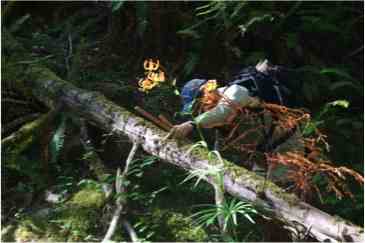
Doug navigates his way under a downed tree while collecting salmon habitat data. Using CHaMP (Columbia Habitat Monitoring Protocol), we measured the length, width at 1/3rd, width at 2/3rds, and maximum depth, while distinguishing each stretch of the stream as either a riffle, scour pool, or non-turb.
Garret Linck is working on habitat conservation and restoration in the California wilderness as the Paul Siegel Salmon Restoration intern. For his final blog installation, he is sharing a series of photos from his experience.
Fort Bragg annually hosts “The World’s Largest Salmon Barbecue” as an effort to raise funds and awareness for Salmon Habitat Restoration in the area. While CHaMP was developed in the Pacific Northwest, conservation organizations have been actively working to extend efforts to Northern California to collect data and restore ideal stream conditions, especially in the aftermath of recent droughts. More information here: http://www.salmonrestoration.com/world_largest_b_3.html.
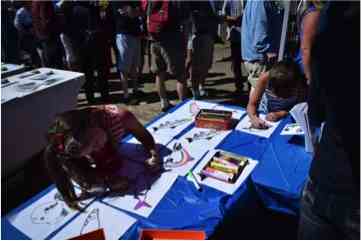
Continue reading Siegel Salmon Restoration Internship 2015: Garrett Linck, Part 3
Siegel Salmon Restoration Internship 2015: Garrett Linck, Part 2
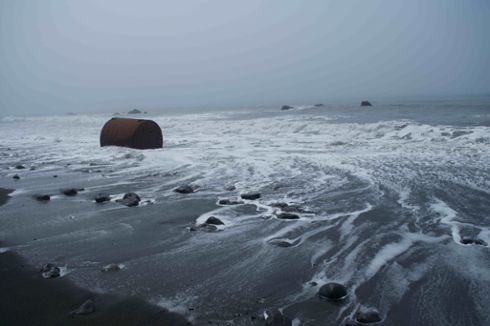
Garret Linck is working on habitat conservation and restoration in the California wilderness as the Paul Siegel Salmon Restoration intern.
It’s hard to believe that I only have two and a half weeks left working for the Mendocino Land Trust. I’m nearly finished with one of the largest projects I’ve been working on this summer: a management plan for the Noyo River Redwoods Property. In my last post I mentioned the salmonid habitat surveys I was conducting in the Noyo River with Doug. This property lies along that same river, but further inland in eastern Mendocino county—near the city of Willits. The 426-acre property was purchased for $7.5 million in 2011 by Save the Redwoods League (a non-profit organization that protects and restores coastal Redwood forests), before being sold to the Mendocino Land Trust in 2012.
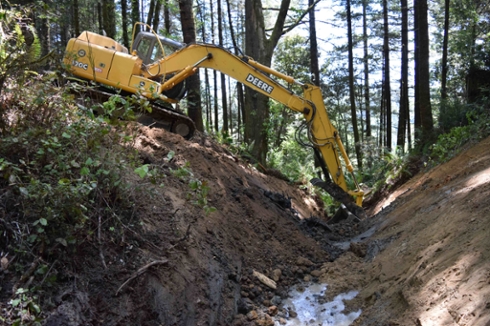
Continue reading Siegel Salmon Restoration Internship 2015: Garrett Linck, Part 2
We Love Clean Rivers Environmental Stewardship Internship: McGill Lawrence Internship Award, Joshua Tsang
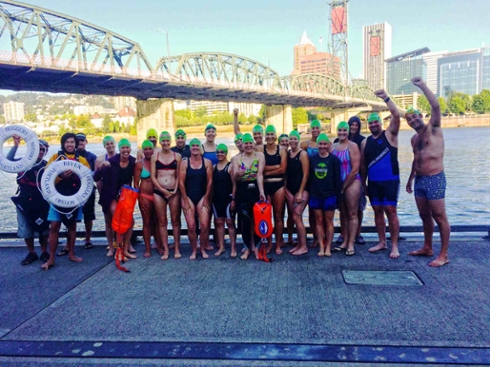
Recipient of the McGill Lawrence Internship Award, Joshua Tsang '18, is combating water pollution through water quality monitoring of rivers around Portland with the nonprofit organization We Love Clean Rivers.
Hands-on and Hands-off River Scrubbing:
Continue reading We Love Clean Rivers Environmental Stewardship Internship: McGill Lawrence Internship Award, Joshua Tsang
Siegel Salmon Restoration Internship 2015: Garrett Linck
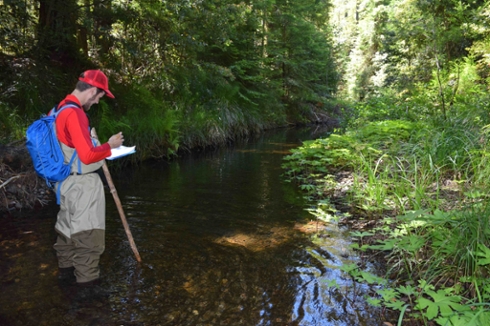
Garret Linck is working on habitat conservation and restoration in the California wilderness as the Paul Siegel Salmon Restoration intern. Read on for his first impressions and experiences.
Situated between Redwood groves and the Pacific Ocean, I have spent my first two weeks as the Paul Siegel Salmon Restoration Intern at the Mendocino Land Trust (MLT) traipsing through the rivers and forests of the North Coast. After a warm welcome from the crew at the MLT office in Fort Bragg, I drove over to Russian Gulch State Park and hauled my guitars, a few crates of vinyl, and my bicycle into the cabin where I will be living until August. From my doorstep, it is a brisk ten-minute walk to the Russian Gulch Headlands and Sinkhole—a mesmerizing locale where I’m frequently impressed by the force of the tide coming in and the abundance of wildlife. Nestled among the craters that perforate the cliff walls, Black Oyster Catchers cling to the walls as the strong wind ruffles their feathers.
On my second day, I jumped into Doug Kern’s (Big River Program Manager) green pickup with Nicolet (Trails & Stewardship Coordinator), and we meandered through the potholed roads of Jackson Demonstration Forest until we reach the nonsensically-named North Fork South Fork of the Noyo River. Doug and Nicolet each donned a pair of waders, which seemed to vie for the title of ‘most-waterlogged’. Doug’s quickly earned the title as evidenced by the continual fountain of water from his boots as he emerged from the river. I penciled in measurements of various habitat types as we traveled upstream, differentiating between Riffles, Scour Pools, and Non-Turbs (three different habitat classification units, denoting the depth, width, and velocity of the water). The terminology takes a bit of time to pick up on, but by the end of the day I was gaining confidence in both my understanding of the survey and my ability to scramble through thorns and underbrush. Three new pairs of waders should be arriving soon, and we will renew our efforts surveying the two-mile segment.
Continue reading Siegel Salmon Restoration Internship 2015: Garrett Linck
Jungle Reedie: Robin Fink, 2009, pursues her dream career in the Ecuadorian jungle
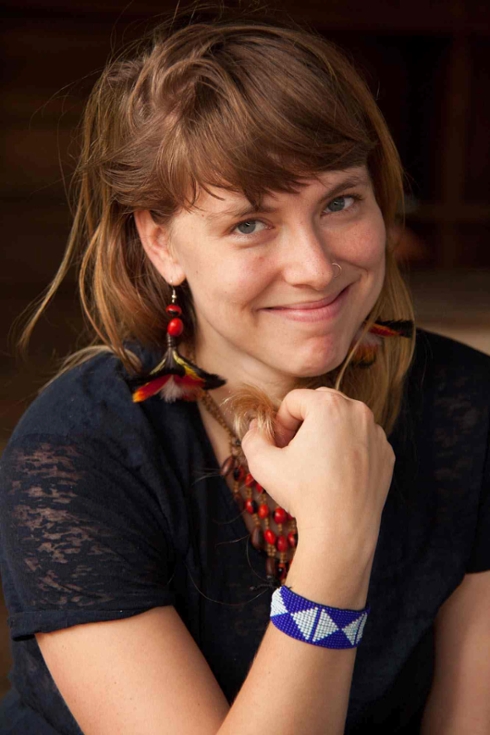
Robin Fink, Class of '09, lives and works in Ecuador where she does her self-proclaimed “dream job.” Involvement with the Ecuador Service Project her freshman year sparked a lifelong passion and career path. Throughout her time at Reed and beyond, her dedication to service and her drive to take advantage of every available resource earned her multiple awards, grants, and scholarships.
Tell me a bit about yourself, and what you are doing now:
I graduated in 2009, so I’ve now been out as long as I was in Reed. Which is totally trippy, really mind-blowing. I’ve lived in Ecuador for the past 4 years. I currently work at organization called Fundación Pachamama, in Quito. We have a sister organization in San Francisco, the Pachamama Alliance. Our focus here is more on the ground, since we’re actually located in Ecuador. We promote alternative forms of development that don’t depend on the extraction of non-renewable resources, and support alternative, sustainable ways of living that are also spiritually fulfilling. I’m working with a program called Jungle Mamas, a maternal and infant health program. It’s intercultural, so we’re working with indigenous nations of people in the Amazon. Actually, we’re working with the Achuar people, which is interesting because Reed had an Anthropology class while I was there called “Nature, Culture, and Environmentalism” and we read a lot about Achuar people… and now I’m working with them!
